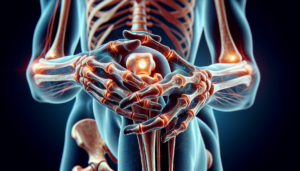Vitamin D Sources: Dietary and Sunlight Requirements
Vitamin D Sources: Dietary and Sunlight Requirements
Understanding Vitamin D
Vitamin D, often referred to as the "sunshine vitamin," plays a crucial role in maintaining various bodily functions, including bone health, immune system performance, and overall well-being. It exists in two main forms: D2 (ergocalciferol), found in some fungi and fortified foods, and D3 (cholecalciferol), which is produced by the skin in response to sunlight.
Finding the right balance of vitamin D from dietary sources and sunlight exposure is essential for optimal health.
The Importance of Vitamin D
Vitamin D is vital for various physiological processes:
- Bone Health: It facilitates calcium absorption in the gut, maintaining adequate serum calcium and phosphate levels, which are critical for bone mineralization.
- Immune Support: Regulates the immune system and reduces the risk of chronic diseases by influencing various immune responses.
- Mood Regulation: Studies suggest a potential link between low vitamin D levels and mood disorders, including depression.
- Chronic Disease Prevention: Adequate levels may lower the risk of certain cancers, cardiovascular diseases, and autoimmune disorders.
Dietary Sources of Vitamin D
Incorporating vitamin D-rich foods into your diet is essential, especially for individuals who may have limited sunlight exposure. Below are significant dietary sources:
1. Fatty Fish
Fatty fish is one of the richest natural sources of vitamin D. Options include:
- Salmon: One of the best sources, providing approximately 570 IU (international units) of vitamin D per 100 grams.
- Mackerel: Offers about 360 IU in a similar serving size.
- Sardines: These canned fish provide around 270 IU.
- Tuna: Particularly in oil, offers about 150 IU per serving.
2. Cod Liver Oil
An excellent supplement that is high in vitamin D, just one tablespoon can deliver up to 1,360 IU of this important nutrient. It is also a good source of omega-3 fatty acids, providing additional health benefits.
3. Fortified Foods
Food manufacturers often fortify products to help combat vitamin D deficiencies:
- Milk: Many brands are enriched with around 100 IU per cup.
- Orange Juice: Some brands also offer fortified options, supplying similar amounts per serving.
- Breakfast Cereals: Depending on the brand, fortified cereals can provide 40 to 100 IU per serving.
- Plant-Based Milk Alternatives: Options like almond, soy, or oat milk are often fortified, typically offering about 100 IU per cup.
4. Egg Yolks
Eggs are a convenient and nutritious source of vitamin D. The yolk contains about 37 IU per egg, making it beneficial in moderation.
5. Cheese
Certain types of cheese, such as swiss and cheddar, contain small amounts — approximately 6 to 20 IU per serving. While not a significant source, cheese can contribute to daily intake when combined with other foods.
Sunlight Exposure: The Natural Source of Vitamin D
Sunlight is an invaluable source, and skin synthesis is the primary way the body obtains vitamin D. The body can produce a substantial amount of vitamin D when UVB rays strike the skin.
Factors Affecting Vitamin D Synthesis
- Geographic Location: People living further from the equator receive less UVB radiation throughout the year, impacting natural vitamin D synthesis.
- Season: Vitamin D production significantly declines in winter months, particularly at latitudes above 42 degrees.
- Time of Day: Midday sun is the most effective for absorption, as rays are typically most intense.
- Skin Pigmentation: Individuals with darker skin require longer exposure to produce the same amount of vitamin D as those with lighter skin due to higher melanin levels.
- Age: Older individuals often have a reduced ability to synthesize vitamin D through sunlight.
- Sunscreen and Clothing: Sunscreen can block UV rays, and covering the skin also limits vitamin D production.
Recommended Sunlight Exposure
Individuals can generally synthesize sufficient vitamin D with about 10 to 30 minutes of sun exposure several times a week, depending on the factors mentioned earlier.
- Fair Skin: Requires about 10-15 minutes of exposure during midday.
- Dark Skin: May need 30 minutes to a few hours of sunlight.
- Skin Areas Exposed: The more skin exposed, the better the vitamin D production.
Balancing Sunlight and Safety
While vitamin D synthesis is beneficial, too much sun exposure can lead to skin cancer risks. It’s essential to practice sun safety:
- Seek Shade: Particularly during peak UV hours (10 a.m. to 4 p.m.).
- Use Sunscreen: Apply broad-spectrum sunscreen with an SPF of at least 30 when staying outdoors for extended periods.
- Cover Up: Wear protective clothing, hats, and sunglasses when necessary.
Vitamin D Deficiency and Its Implications
Despite the availability of vitamin D through diet and sunlight, deficiencies are common, particularly among:
- Individuals living in northern latitudes
- Those with limited sun exposure due to work or lifestyle
- Older adults, as the skin’s capacity to synthesize vitamin D diminishes with age
- People with darker skin tones
- Those adhering to strict vegan diets, given the limited plant vitamin D sources
Symptoms of Deficiency
- Fatigue
- Bone pain or weakness
- Muscle weakness
- Increased risk of fractures
Testing and Supplementation
Individuals concerned about their vitamin D levels can request a blood test to measure serum 25-hydroxyvitamin D. The general recommendation for optimal health is a serum level of 20-30 ng/mL.
Supplement Options
If dietary and sunlight sources are inadequate, integrating supplements may be necessary. Vitamin D3 is preferred due to its efficacy in raising and maintaining vitamin D levels in the body. Recommended dosing varies based on age, health status, and individual needs, generally ranging from 600 IU to 2,000 IU daily.
Conclusion: Finding Balance
Striking a balance between dietary intake and adequate sunlight exposure is essential for maintaining healthy vitamin D levels. By understanding the benefits of this critical nutrient, and knowing where to obtain it, individuals can work toward achieving optimal health and well-being. Ensuring that dietary sources are consumed regularly while also considering safe sun exposure will play a crucial role in overall vitamin D sufficiency.








